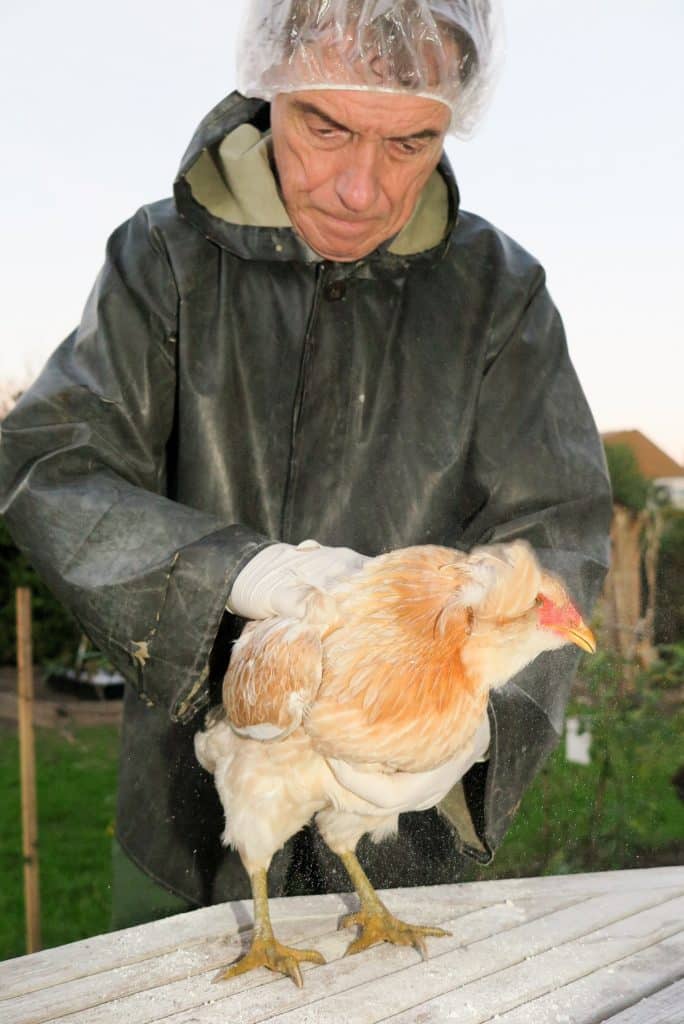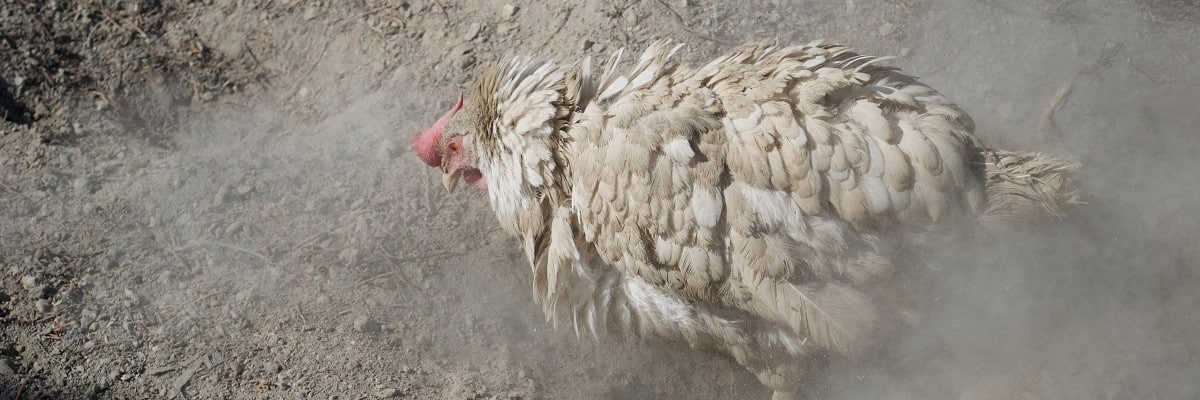After you’ve had a dose of human lice, poultry lice will more than likely seem very similar to you. Bear in mind; chicken lice exist only on chickens. They could leap onto you and your clothes, but they can’t support themselves on you, which means they’re going to die. In brief, chicken lice are tiny, flat bugs. They’ve got six legs, so they travel easily around your chickens. Like human lice, they lay their larvae at the base of the feathers of your poultry, and adults reside on the surface of the chicken’s skin.
The great news is that the poultry lice lifespan is comparatively brief. The unfortunate thing is that they’re constantly breeding. Mites on the other hand can take a ride to your lovely, fresh coop on just about anything—native birds, rats and other creatures, on your footwear and clothes, and even on you. If you display your chickens at regional or national shows, there will always be a risk that your chickens will pick up any unwanted visitors. The type of mites your chickens will mostly catch are the following:
| Scaly leg mites | Red roost mites |
| Northern fowl mites | Depluming mite |
| Tropical fowl mite |
The main natural ways to treat Chicken Lice and Mites include Diatomaceous Earth, Dust Baths, and Garlic Juice.
Dust Baths To Naturally Treat Lice and Mites in Chickens
If you’ve ever watched your chickens closely, you’ll find that they often cover their bodies in dust and dirt, and they seem to be delighted to do that. Although this bathing technique seems strange to us, it is very useful for your chickens. Dust not only helps to eliminate excess oil, but it also makes your chickens less attractive for pests such as lice and mites. This inherent activity is not limited to chickens. Many other birds and mammals actively participate in dust bathing to maintain their bodies.
Dust Bath and Parasites
Sadly, chickens in the yard and their coop are particularly vulnerable both to lice and mites. Not only can such pests cause considerable pain to your chickens, but they can also be a cause of disease. Dust helps manage these parasites by making the body of the chickens less livable. Dusty feathers can block lice and mites airways and pores. As a chicken owner, it is important to promote dust bathing as part of the management and welfare strategy of your chickens.
How To Make A Dust Bath For Your Chickens
| Dig a hole: Approximate. 60 cm in diameter, approx. It’s 20 cm long. You could build it larger if you like and add a plastic wading pool to accommodate the dust bath. |
| Add some fine dirt: Chickens need fine powder-like dust to get in and between their feathers to be thoroughly cleaned. The finer dust is easy to scrape and fluff underneath their wings. |
| Add Diatomaceous Earth: (See next topic) Diatomaceous Earth provides an extra layer of lice and mite defence. This very well-known insecticide is totally natural, created from the fossilized remains of algae. |
| Add wood ash: Wood ash or ash from either a fireplace will make a pleasant addition to your chicken’s dust bath, contributing sources of vitamin K, calcium and magnesium to their cleaning routine. The charcoal throughout the ash helps to absorb contaminants within the body of the chickens and their feathers. |
| Cover the bath: The dust bath performs great when the dust is bone-dry and does clump. Attach a tarp across the dust bath when it’s raining to make sure your chickens get dirty if they need to. |
Diatomaceous Earth To Naturally Treat Lice and Mites in Chickens
Over the past couple of years, this product has been controversial. Either you like it, or you dislike it. It’s said to regulate the mites, lice within your coop. Meanwhile, other people say it doesn’t work whatsoever. Diatomaceous earth is a fossilized remnant of small marine creatures termed diatoms. Their fossils are made from a natural material called silica. Diatomaceous earth functions as a drying agent, some claim that if chickens eat it, then it will kill internal parasites.
Most of them, nevertheless, are using it as a topical treatment to combat external mites and lice on chickens. Diatomaceous soil must be used in moderation as it may cause enclosed poultry to have breathing issues when applied excessively. And because it is a drying agent, it may leave your chickens feet exposed to drying and cracking, raising the risk of bumblefoot.
Diatomaceous earth can also be used in places where your chickens utilize dust baths. They instinctively love the texture of Diatomaceous earth and will gladly take a bath in the dust comfortably if it is granted access to them. The Diatomaceous earth will dry out the mites and lice and destroy them on your chickens. Should you need to distribute it in a coop, extract your chickens from the coop before dusting to avoid breathing issues.

Garlic Juice To Naturally Treat Lice and Mites in Chickens
When you’re searching for a reliable and effective herbal treatment to get rid of chicken mites and lice – a lot of free-range chickens owners believe in using garlic juice. Garlic belongs to the family Allium and is genetically similar to an onion, scallion, chive, leek and shallot. It has been used by people for thousands of years it has been used in ancient times for both medicinal purposes.
How To Make Garlic Juice To Combat Lice and Mites In Your Chickens
If you don’t notice the scent of garlic, it can’t be cheaper to create and use garlic juice for your chickens.
| All you have to do is create garlic juice is: |
|---|
| 1. Select a garlic bulb and compress the garlic most people press the garlic using the flat surface of a knife, but if you have a garlic crush, you can use that. |
| 2. Make some boiling water. While it’s boiling add the crushed garlic cloves. |
| 3. After several minutes, then use a potato masher to crush the cloves which have now soften. |
| 4. Enable the garlic to boil for a couple more minutes. |
| 5. Take the mix of garlic from the stove and leave it to cool. |
| 6. Mix 5 parts of water to 1 part of the garlic juice into a plastic spray bottle. |
| 7. Add one or two drops of dishwashing liquid. (Organic) |
How To Treat Your Chickens Mites With Garlic Juice
With the garlic juice in a spray bottle, spray the chickens directly making sure to get under their wings also. Make sure you spray around their coop. Don’t overdo the garlic juice. It is more important to use a few lighter treatments too, ensure that they have an impact on mites, lice and destroy their eggs. When you’re in your chicken’s coop, spray the solution all over. There are some types of mites, like red mites, also known as roost mites that live in the surrounding holes in wood panelling and bedding.
One Last Thing Nest Boxes
There are nothing mites, and lice love more than setting up shop in a coop and nesting box bedding, so please make sure you remove it periodically. If you find lice or mites at home, you’ll have to dump the old bedding. It is recommended to use Hemp Bedding for your chicken coop and nesting boxes. It’s really a good pest-repellent, sustainable and highly absorbent.


